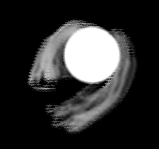Zeuzzz
Banned
- Joined
- Dec 26, 2007
- Messages
- 5,211
I remember hearing about a scientist who gave some subjects some glasses that inverted their vision, and after a week or so of them wearing the glasses apparently everything flipped back up the right way even when wearing them. After this when they took the glasses off because their brain had inverted their visual field everything looked like it was upside down for a few days until their vision flipped again and they could see normally. Stanfords professor emeritus William Tiller gives a brief talk about it here which reminded me about it: http://www.youtube.com/watch?v=7ZtD4O6BDCs He says it was done by some dude called Slater. But thats not much help in finding it without a surname.
Anyone got the publication or another similar one? Has it been repeated? And anyone know of any other similar more recent studies where our state of mind can directly physically effect the processing of the neural dendrite system? or other networks?
Thanks.
Anyone got the publication or another similar one? Has it been repeated? And anyone know of any other similar more recent studies where our state of mind can directly physically effect the processing of the neural dendrite system? or other networks?
Thanks.
Last edited:

